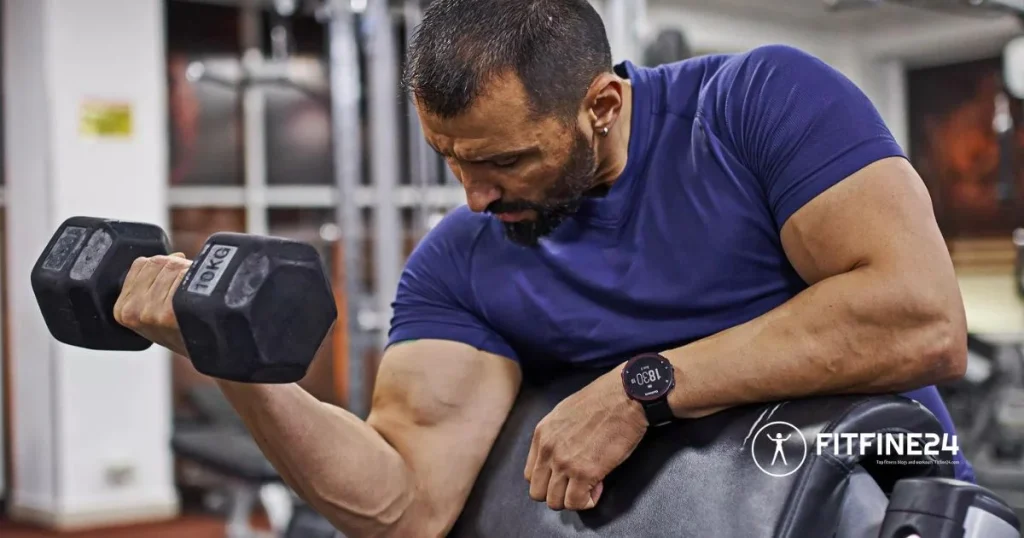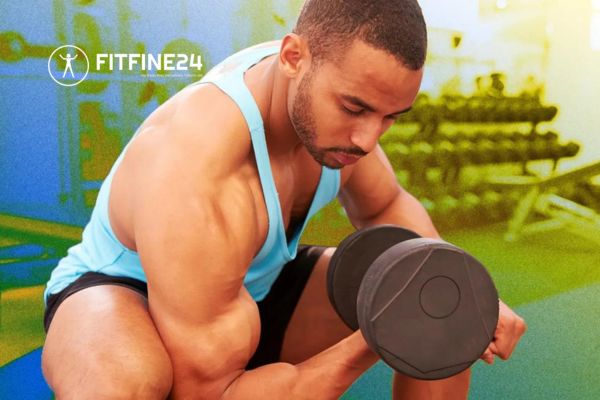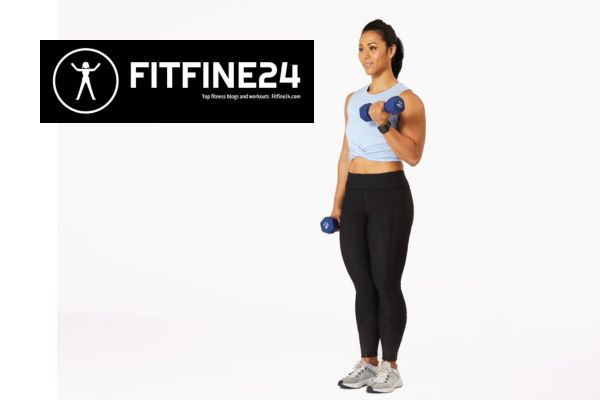
In terms of making the arms stronger and also boosting the general upper body strength, the bicep curl is probably, apart from a few others, one of the best exercises. This is a basic gym exercise for muscle building and it works on the targeted bicep brachii muscles which are located along the front outer portion of the upper arms. Irrespective of one’s level of practice; a beginner or an advanced fitness addict, doing a bicep curl helps improve one’s workout.
What do you mean by a Bicep Curl?
A bicep curl is described well as one of the most simple exercises also quite effective this consists of lifting a load in one’s hands directed towards the chest area of the upper arms. This movement also makes the biceps the star of the exercise as the motion is aimed at the arm muscles. Exercises suggesting repetitive use of upper arms to bring the forearms towards the shoulders are comprehended under bicep curls. These exercises can be performed by various methods of low-tech inertia sport, e.g. dumbbells, barbells, rubber bands, cables, or resistance bands depending on the individual and experience level.
Muscles Worked During Bicep Curls.
Although the bicep curl looks like it’s only for the biceps brachii, this muscle targets only as a primary mover wherein other muscles act as secondary stabilizers. These muscles include:
Brachialis: It is the muscle located underneath the biceps brachii and assists in elbow flexion.
Brachioradialis: This muscle of the forearm is activated at the upwards curl action.
Deltoids: These shoulder muscles help maintain the position of the arm whilst under such lift.
When these muscles are emphasized, the bicep curl aids in improving the strength and muscle tone of the arms.
Guidelines on the Ideal or Correct Steps on How the Bicep Curl Should be Done
The right technique should be adopted to take full benefits out of the Bicep Curl and to prevent any form of injury. These are the steps to follow in a proper manner of carrying out the exercise

Choosing the Right Weight: Take a weight, which is also a little heavier than it can be performed with a normal form of exercise. As in, the weight should be such that you can perform this rep without being forced to break proper form.
Starting Position:Stand up straight keeping your feet shoulder apart. Each hand holds one dumbbell and fully extends at the arm with the palms facing forward.
Curl the Weight:With the dumbbells held, slightly bring both dumbbells up by bending the elbow and retracting the weight towards the shoulder. Do not tilt your upper arms in all these movements; the only pivot is on the forearms. Let out a breath when curling up the weights.
Pause and Squeeze:At the top of the movement when everything and everyone is as high as possible let go of everything for a fraction of a second with all the strength and intensity you have where all the biceps are contracted.
Lower the Weights:Holding the weights with your elbows tucked to your back and without using your arms, take a deep breath out and gently bring the weights up and back to the appropriate position. While doing this, make sure that the biceps are still tense, so perform the movement in a controlled way.
Repetitions: Does this mean 8-12 reps for 3-4 sets depending on what stage of fitness you are in?
Common Mistakes to Avoid
To maximize the benefits from your bicep curl while staying as injury-free as possible, it is important to avoid these common mistakes

Swinging the Weight: Hill, W. T. (2004) Repetitions Repeating: Can this be low enough; Repetitions Repeat for two repetitions in the previous sets and then add two more;
Lifting Too Heavy:Any weight will do. America does, they say? Repetition can do this without injuring the person. ‘It’s enough…’
Incomplete Range of Motion:Make sure you bring down the weights towards the chest level to load the biceps brachii fully throughout the writing more volume.
Elbows Moving Forward:While performing closer-grip curls, we suggest keeping your elbows tight against your body to focus all the tension on the biceps and reduce the contribution of the shoulders.
Variations of Bicep Curls
Doing variations of bicep curls is a great idea because it allows you to work on different parts of the biceps and avoid hitting a plateau in your workouts. Let me outline some common variations

Hammer Curl:As an alternative to keeping your palms forward throughout the exercise, keep them in a semi-turned position either facing or parallel to one another; this allows more of the thermoplastic to be built up and better qualities for arm enhancement.
Concentration Curl: Locate a bench, lean forward till your elbow is at the medial aspect of your thigh, and lift and curl the dumbbell towards the shoulder. This helps in pulling out the biceps and connects the mind and muscles.
Barbell Curl: One of the benefits of using a barbell is that the lifters will be able to lift heavier weights and employ both biceps at the same time giving an overall effect to the arm region. This is good for developing upper arm strength.
Cable Curl:The use of a cable machine allows the patient to apply maximal effort to the biceps through the entire range of motion due to the elastic properties of the equipment, which facilitates muscle growth.
Preacher Curl:This curl is performed using a special preacher bench which is used to target the lower biceps without overstretching the lower spine.
Benefits of Bicep Curls
Adding bicep curls to your workouts reaps a lot of advantages to your body.

Increased Arm Strength: Bicep curls are exercises that when performed frequently will be able to enhance the muscles in the arms making simple tasks such as lifting and carrying things less difficult.
Better Aesthetic Appeal:Some exercises such as the bicep curl can be beneficial in bringing th toning effects to the arms hence a better overall body structure.
Functional Fitness:The biceps are essential not only for muscle building but also play an important role in functional fitness. This implies that an individual will be able to engage in various activities with less effort and maximum effectiveness.
Balanced Upper Body Development:Bicep curls should not be done in isolation from other muscles, preferably triceps which allow for better proportion and muscular development of the overall body.
How to Integrate Bicep Curls in Perform Bicep Curls 2-3 times per week as part of your upper body or total body workout.
Conclusion
In most fitness regimes, the bicep curl can be described as the most ancient yet effective exercise. It works to develop strength, and aesthetic appeal of the arms, as well as aid in functional tasks. There will be very little advantage to utilizing this simple exercise without understanding how to execute it well, its variations, and its common errors. It does not matter if it is your first time lifting weights or if you exercise regularly. You will find the bicep curl very helpful in massing and toning the arms

